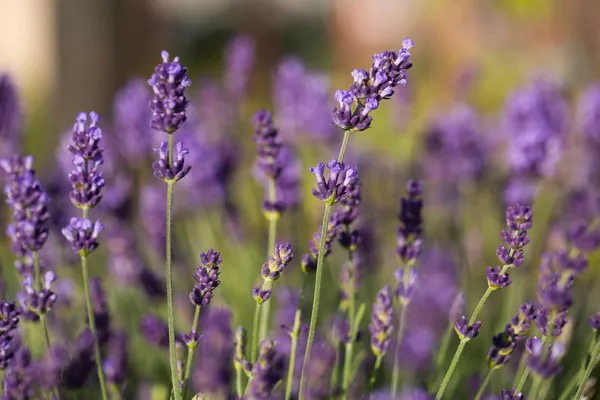In the intricate tapestry of the natural world, insects play a crucial role, serving as pollinators, decomposers, and predators. While many insects are harmless or even beneficial to humans, some possess potent venom or toxins that can cause severe harm or even death. In this comprehensive exploration, we uncover the top 10 most poisonous insects on Earth, shedding light on their deadly capabilities, evolutionary adaptations, and ecological significance. From the tiny yet lethal bullet ant to the notorious kissing bug, these formidable creatures remind us of nature’s awe-inspiring power and complexity.
1. Bullet Ant (Paraponera clavata)
Known as the “24-hour ant” due to the excruciating pain its sting inflicts for up to 24 hours, the bullet ant reigns as one of the most venomous insects on the planet. Found in the rainforests of Central and South America, these formidable ants deliver a sting packed with potent neurotoxins, causing intense pain, swelling, and even temporary paralysis in humans. Despite their diminutive size, bullet ants wield a sting that ranks among the most painful in the insect kingdom, earning them respect and fear from both predators and humans alike.
2. Kissing Bug (Triatominae)
While its name may sound innocuous, the kissing bug harbors a deadly secret: it is a vector for Chagas disease, a potentially life-threatening illness caused by the parasite Trypanosoma cruzi. Found predominantly in the Americas, these blood-sucking insects transmit the parasite to humans and other mammals through their feces, which they deposit near the bite wound. Chagas disease can lead to severe cardiac and gastrointestinal complications if left untreated, making the kissing bug one of the most dangerous insects in terms of its potential impact on human health.
3. Africanized Honey Bee (Apis mellifera scutellata)
Dubbed the “killer bee” for its aggressive behavior and potent sting, the Africanized honey bee is a hybrid species resulting from the interbreeding of African and European honey bee subspecies. Originally introduced to the Americas in the mid-20th century, these invasive insects have since spread across the continent, displacing native bee populations and posing a significant threat to agriculture and public safety. Africanized honey bees are highly defensive of their hives and will attack perceived threats en masse, often pursuing intruders for long distances and inflicting multiple stings that can be fatal to humans, particularly those allergic to bee venom.
4. Maricopa Harvester Ant (Pogonomyrmex maricopa)
Native to the deserts of the southwestern United States, the Maricopa harvester ant possesses one of the most potent insect venoms known to science. Despite its small size, this formidable ant delivers a sting that packs a powerful punch, containing a potent cocktail of toxins that can cause excruciating pain, swelling, and localized tissue damage. In addition to its venomous sting, the Maricopa harvester ant is known for its aggressive behavior and highly organized colonies, making it a formidable adversary in its arid desert habitat.
5. Box Jellyfish (Chironex fleckeri)
Although technically not an insect, the box jellyfish deserves mention for its deadly venom, which ranks among the most potent toxins in the animal kingdom. Found in the waters of northern Australia and Southeast Asia, these translucent marine creatures possess tentacles lined with thousands of specialized stinging cells called nematocysts, which inject venom into their prey upon contact. The venom of the box jellyfish is highly toxic to humans, causing excruciating pain, paralysis, and, in severe cases, cardiac arrest and death within minutes of envenomation.
6. Brazilian Wandering Spider (Phoneutria)
Named for its habit of wandering the forest floor in search of prey, the Brazilian wandering spider is one of the most venomous arachnids in the world. Found in the rainforests of South America, these large, aggressive spiders possess venom that is highly neurotoxic and can cause paralysis and respiratory failure in humans. In addition to its potent venom, the Brazilian wandering spider is known for its intimidating size and aggressive behavior, making it a formidable predator and a source of fear for those who encounter it in its natural habitat.
7. Deathstalker Scorpion (Leiurus quinquestriatus)
As its ominous name suggests, the deathstalker scorpion is not to be trifled with, possessing venom that can be lethal to humans if left untreated. Found in the deserts of North Africa and the Middle East, these nocturnal arachnids are equipped with venom glands that produce a potent cocktail of neurotoxins, which can cause severe pain, convulsions, and respiratory failure in their victims. Despite their small size, deathstalker scorpions are feared for their potent sting and aggressive behavior, making them a formidable predator in their arid desert habitat.
8. Paper Wasp (Polistes spp.)
While paper wasps may seem innocuous compared to their more notorious relatives like hornets and yellow jackets, they possess a potent sting that can cause intense pain and allergic reactions in humans. Found throughout the world, these social wasps build distinctive papery nests from wood pulp and plant fibers, where they raise their colonies and defend their territory with vigor. Paper wasps are known for their aggressive behavior when threatened, and their stings can be particularly dangerous to individuals with allergies to insect venom, highlighting the importance of caution when encountering these insects in the wild.
9. Fire Ant (Solenopsis spp.)
Despite their small size, fire ants pack a powerful sting that can cause intense pain, swelling, and allergic reactions in humans. Native to South America, these invasive insects have spread to other parts of the world, including North America, Asia, and Australia, where they pose a significant threat to agriculture, public health, and biodiversity. Fire ants are known for their aggressive behavior and highly organized colonies, which can contain millions of individuals and inflict painful stings on humans and other animals that venture too close to their nests.
10. Sydney Funnel-web Spider (Atrax robustus)
Found in the forests and urban areas of eastern Australia, the Sydney funnel-web spider is one of the deadliest arachnids in the world. Possessing fangs capable of piercing human skin and delivering a potent neurotoxic venom, these large, aggressive spiders pose a significant threat to humans, particularly children and the elderly. Despite their fearsome reputation, funnel-web spiders play a vital role in their ecosystems as predators of insects and other small animals, highlighting the complex interplay between predator and prey in the natural world.
Conclusion
In the intricate web of life, insects occupy a diverse array of ecological niches, from pollinators and decomposers to predators and parasites. While many insects are harmless or even beneficial to humans, some possess potent venom or toxins that can cause severe harm or even death. From the tiny yet lethal bullet ant to the formidable Sydney funnel-web spider, the top 10 most poisonous insects on Earth serve as a reminder of nature’s power and complexity, highlighting the importance of understanding and respecting the diverse array of life forms with which we share our planet.
You Might Be Interested In:
- Unveiling The Top 9 Strongest Animals In The World!
- The World’s Deadliest Spider (Plus Picture!)
- Birds: You May Not Know” href=”https://www.validdownloads.com/archives/1824″ rel=”bookmark”>Unveiling The 13 Best Pet Birds: You May Not Know






















